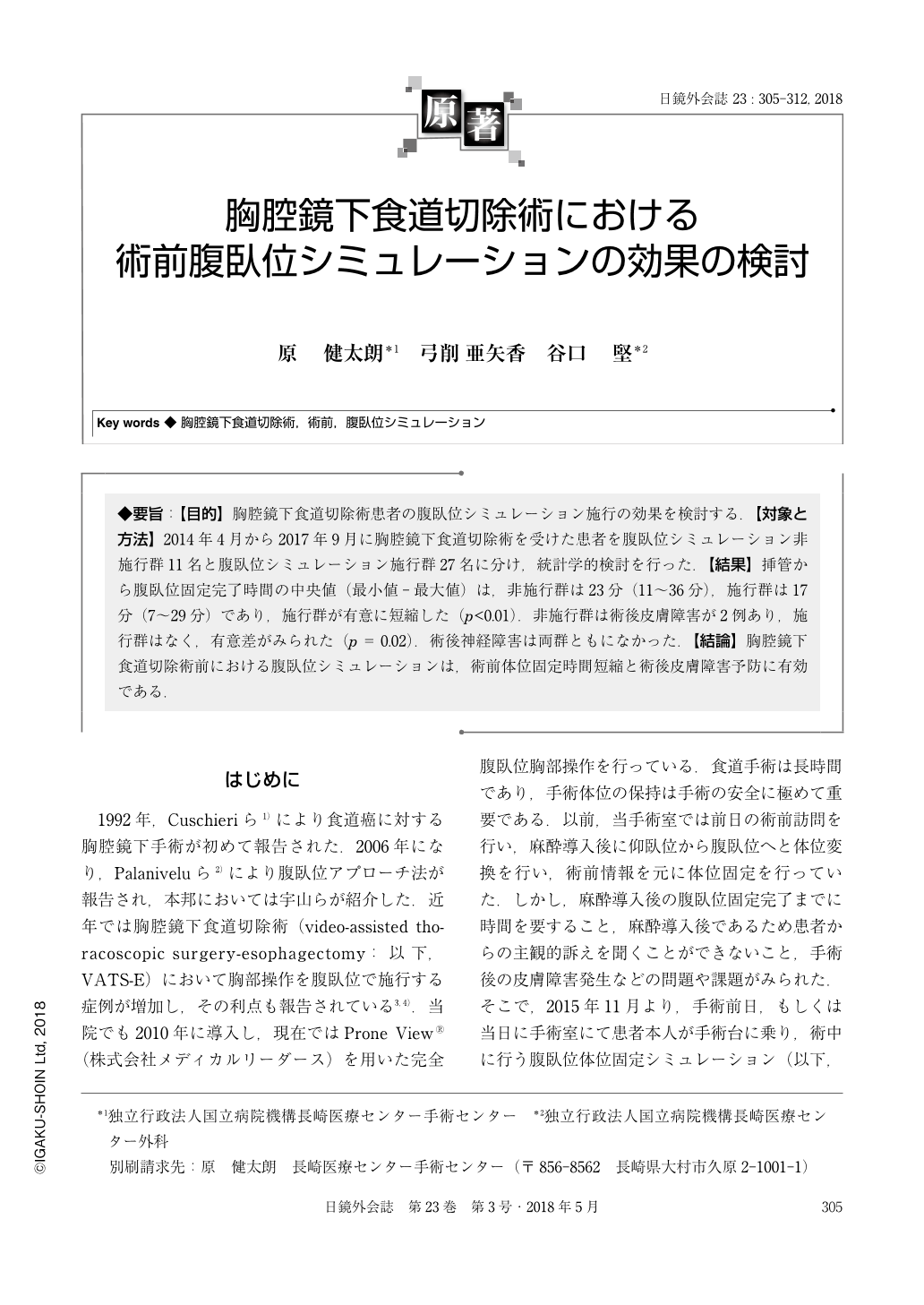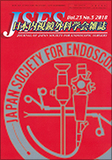Japanese
English
- 有料閲覧
- Abstract 文献概要
- 1ページ目 Look Inside
- 参考文献 Reference
◆要旨:【目的】胸腔鏡下食道切除術患者の腹臥位シミュレーション施行の効果を検討する.【対象と方法】2014年4月から2017年9月に胸腔鏡下食道切除術を受けた患者を腹臥位シミュレーション非施行群11名と腹臥位シミュレーション施行群27名に分け,統計学的検討を行った.【結果】挿管から腹臥位固定完了時間の中央値(最小値-最大値)は,非施行群は23分(11〜36分),施行群は17分(7〜29分)であり,施行群が有意に短縮した(p<0.01).非施行群は術後皮膚障害が2例あり,施行群はなく,有意差がみられた(p=0.02).術後神経障害は両群ともになかった.【結論】胸腔鏡下食道切除術前における腹臥位シミュレーションは,術前体位固定時間短縮と術後皮膚障害予防に有効である.
[Objectives]We investigated the effect of prone position simulation for patients scheduled to undergo video-assisted thoracoscopic esophagectomy. [Methods]From April 2014 to September 2017, 27 patients underwent prone position simulation before the introduction of anesthesia (Group B) and 11 patients did not receive this simulation (Group A). [Results]The median (min-max) time from intubation to completion of prone position fixation was 23 (11-36) minutes for Group A and 17 (7-29) minutes for Group B (p < 0.01). There were two patients who had postoperative skin disorder in Group A, whereas none in Group B developed skin disorder (p=0.02). Neither group displayed postoperative neurological disorders.[Conclusion]Prone position simulation in advance can shorten the preoperative posture fixation time and is effective in preventing postoperative skin disorders.

Copyright © 2018, JAPAN SOCIETY FOR ENDOSCOPIC SURGERY All rights reserved.


